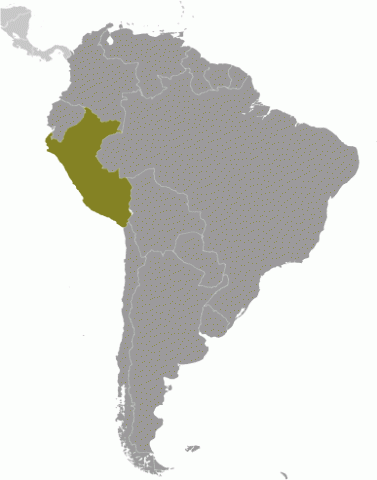Child Labor and Forced Labor Reports
Peru


Moderate Advancement
In 2024, Peru made moderate advancement in efforts to eliminate the worst forms of child labor. The Ministry of Labor launched the SOS Alert Against Child Labor and Forced Labor mobile application that allows municipal agents to report suspected cases of child labor and forced labor. The app was used over 200 times during the reporting period. The government also launched the Coordination Mechanism for the Identification and Referral of Cases of Forced Labor and/or Trafficking in Persons for Labor Exploitation. This new mechanism aims to streamline the referral process to social services, improve interagency coordination, and address differences in indicators used by inspectors to identify trafficking in persons and forced labor cases. Furthermore, the government introduced a new school meal program called Wasi Mikuna. The new program aims to ensure safer distribution of food and to include civil society and parents in its management. However, despite these efforts, criminal and civil enforcement agencies continue to lack sufficient resources to enforce child labor laws. In addition, Peruvian law allows children ages 12 to 14 to do light work without specifying the activities in which children may perform light work. Labor law enforcement agencies in Peru also still lack a sufficient number of inspectors to adequately address child labor throughout the country, and existing social programs do not fully address the problem of child labor in Peru.
| Children | Age | Percent and Population |
|---|---|---|
| Working | 5 to 14 | 18.7% (1,213,785) |
| Hazardous Work by Children | 15 to 17 | Unavailable |
| Attending School | 5 to 14 | 83.0% |
| Combining Work and School | 7 to 14 | 18.0% |
| Sector/Industry | Activity |
|---|---|
| Agriculture | Fishing,† logging,† and clearing forestland for mining. |
| Industry | Mining† gold. Production of bricks† and fireworks,† construction, and metal manufacturing. |
| Services | Street work,† including vending, begging, shoe shining, carrying loads, selling goods in kiosks and markets, collecting fares on public buses,† and washing cars. Treating leather, repairing shoes, and tailoring. Repairing motor vehicles.† Garbage scavenging.† Working in restaurants, domestic work,† and cleaning offices and hotels. |
| Categorical Worst Forms of Child Labor‡ | Forced labor in mining and logging, street vending, and begging. Forced domestic work. Commercial sexual exploitation, including in bars, nightclubs, brothels, and logging and mining camps, each sometimes as a result of human trafficking. Growing and processing coca (stimulant plant) and transporting drugs. Counterfeiting lightbulbs. Recruitment of children by non-state armed groups for use in armed conflict. |
† Determined by national law or regulation as hazardous and, as such, relevant to Article 3(d) of ILO C. 182.
‡ Child labor understood as the worst forms of child labor per se under Article 3(a)–(c) of ILO C. 182.
Children at Higher Risk
Native children and children from Colombia, Ecuador, and Venezuela are especially vulnerable to commercial sexual exploitation, domestic work, organized begging, and forced labor, particularly in the mining regions of Peru. Reporting also identified that children in poverty and workers in the informal economy are at increased risk of sex trafficking or forced labor. Additionally, children who work in illicit activities, such as drug trafficking, are at increased risk of forced labor and may be exposed to hazardous chemicals used to process coca leaf into coca paste or cocaine. Media and civil society reports also suggest that the Militarized Communist Party of Peru, led by remnants of the Shining Path, continued to use local children to engage in narco-terrorist activities in the Valley of the Rivers Apurimac, Ene, and Mantaro regions.
Barriers to Education Access
Estimates suggest that the number of school closures in Peru was the highest among Latin American countries. Additionally, over $20.9 million ($80 million Peruvian soles) is needed to address infrastructure gaps in 30,000 schools, with over 1,000 schools at risk of collapsing and some schools lacking basic services such as electricity or water. Problems such as limited class sizes, long distances to schools, and lack of necessary documentation such as birth certificates or passports continue to hinder education access for many children. While education is free, school retention of Venezuelan children in Peru was often impacted by their families’ lack of economic resources, limited access to social protection, xenophobia, and displacement, among other factors.
| Standard | Age | Meets International Standards | Legislation |
|---|---|---|---|
| Minimum Age for Work | 17 | ✓ | Articles 1, 51, 56, 57, 69, 70, and 73 of the Child and Adolescent Code; Articles 4 and 5 of Law No. 29981 on SUNAFIL |
| Minimum Age for Hazardous Work | 18 | ✓ | Articles 1, 58, 69, 70, and 73 of the Child and Adolescent Code; Articles 4 and 5 of Law No. 29981 on SUNAFIL |
| Identification of Hazardous Occupations or Activities Prohibited for Children | ✓ | Articles 1 and 2 of the Supreme Decree No. 009-2022-MIMP and its Annex; Article 58 of the Child and Adolescent Code | |
| Prohibition of Slavery, Debt Bondage, and Forced Labor | ✓ | Articles 2 and 23 of the Constitution; Article 4 of the Child and Adolescent Code; Article 129-O of the Penal Code | |
| Prohibition of Child Trafficking | ✓ | Articles 153 and 153-B of the Penal Code | |
| Prohibition of Commercial Sexual Exploitation of Children | ✓ | Article 4 of the Child and Adolescent Code; Articles 129-A, 129-B, 129-H–129-J, 129-L, 129-M, 179–181-B, and 183 of the Penal Code | |
| Prohibition of Using Children in Illicit Activities | ✓ | Articles 46-D, 128, 296, 296-A, and 297 of the Penal Code | |
| Minimum Age for Voluntary State Military Recruitment | 18 | ✓ | Articles 2 and 23 of Law No. 29248 Military Service |
| Prohibition of Compulsory Recruitment of Children by (State) Military | ✓ | Articles 2 and 6 of Law No. 29248 Military Service | |
| Prohibition of Military Recruitment by Non-state Armed Groups | ✗ | ||
| Compulsory Education Age | 17‡ | ✓ | Article 17 of the Constitution; Articles 12 and 36 of the General Education Law; Article 61 of Supreme Decree No. 011-2012-ED |
| Free Public Education | ✓ | Article 17 of the Constitution; Article 4 of the General Education Law |
‡ Age calculated based on available information
The Child and Adolescent Code includes a light work exception for children as young as age 12 without specifying the activities in which light work may be permitted. In addition, the light work provision allows children under 15 to work up to 24 hours per week. Peru also lacks legislation to prohibit the recruitment of children by non-state armed groups.
| Organization/Agency | Role & Activities |
|---|
| Ministry of Labor and Promotion of Employment (MTPE): Responsible for supporting the National Labor Inspection Superintendency (SUNAFIL), which enforces labor laws by inspecting workplaces with more than 10 registered workers and referring cases of child labor to the Ministry of Women and Vulnerable Populations (MIMP) and the Public Ministry (MPFN), as appropriate. SUNAFIL has a unit of 10 inspectors who target forced labor and child labor violations, and who train other inspectors on these topics. SUNAFIL also has regional offices in Apurímac, Ucayali, Huancavelica, and Tacna, covering all 26 subnational entities of Peru. MIMP has 1,890 offices that work collaboratively with MTPE and local officials, including police, to use a referral protocol, called the Municipal Model for the Detection and Eradication of Child Labor, to ensure that adolescents who are removed from hazardous work receive appropriate social services. In 2024, MTPE launched the SOS Alert Against Child Labor and Forced Labor app that allowed municipal agents to report suspected cases of child labor and forced labor. In coordination with several government agencies, it also carried out an operation to prevent child labor in tourist areas around the Cercado de Lima. MTPE evaluated cases of child labor and provided training for small businesses and support for parents. |
| Ministry of the Interior (MININTER): Investigates child trafficking cases and maintains a hotline to receive reports of human trafficking. Provides survivors and the public with information on human trafficking, refers cases to relevant government offices, and coordinates services for survivors. Within MININTER, the Peruvian National Police enforce criminal laws related to the worst forms of child labor and maintain the Office to Address Human Trafficking and Illicit Migrant Smuggling (DIRCTPIM), which investigates cases of child trafficking for labor and sexual exploitation. MININTER coordinates with MPFN and MIMP to place survivors with family members or state social services. DIRCTPIM has approximately 150 investigators. |
| Overview of Enforcement Efforts | 2024 |
|---|---|
| Has a Labor Inspectorate | Yes |
| Able to Assess Civil Penalties | Yes |
| Routinely Conducted Worksite Inspections | Yes |
| Unannounced Inspections Permitted | Yes |
| Has a Complaint Mechanism | Yes |
| Imposed Penalties for Child Labor Violations | Yes |
| Conducted Criminal Investigations for Worst Forms of Child Labor Crimes | Yes |
| Imposed Penalties for Worst Forms of Child Labor Crimes | Yes |
In 2024, 877 labor inspectors conducted 1,287 workplace inspections, finding 74 child labor violations. The government also conducted 224 investigations into suspected cases of the worst forms of child labor. It is unknown how many prosecutions were initiated or how many perpetrators were convicted.
| Coordinating Body | Role & Activities |
|---|
| Multisectoral Permanent Commission for the Follow-up to the Implementation of the Multisectoral Policy for Children Towards 2030: Led by MIMP through its Vice Ministry for Vulnerable Populations (Chair) and Directorate-General for Children (Secretariat) and comprises 22 government officials from 16 different agencies. Its three main duties include (a) monitoring the Multisectoral National Policy for Children Towards 2030 (PNMNNA), (b) publishing reports on urgent measures to be adopted by service providers, and (c) issuing an annual technical report. During the reporting period, the Commission continued to evaluate the effectiveness of PNMNNA. |
| Policy | Description & Activities |
|---|
| Multisectoral National Policy for Children Towards 2030 (PNMNNA): Aims to eliminate the worst forms of child labor by improving the livelihoods of low-income families, providing better working conditions for adolescents, raising awareness of child labor, increasing law enforcement efforts, and collecting child labor data. Although the policy remained active during the reporting period, research was unable to determine if activities were carried out to address child labor. |
| National Policy Against Trafficking in Persons and its Forms of Exploitation (2022–2030): Led by MININTER and serves as the roadmap to prevent, control, reduce, and prosecute human trafficking crimes at all levels. Under this policy, the government operates seven specialized shelters exclusively for girls exploited in sex trafficking in the regions of Cusco, Lima, Loreto, Madre de Dios, and Puno, with a capacity for approximately 130 survivors. MININTER launched an awareness campaign called Corazón Azul to raise awareness about human trafficking and reporting suspected human trafficking cases, with a focus on vulnerable children and adolescents. The campaign involved collaboration from various public and private institutions. |
| Program | Description & Activities |
|---|
| Secondary Tutorial Program:‡ Rural basic education program supported by the Ministry of Education that includes school meal plans for rural students throughout the country, including hard-to-reach native communities. During the reporting period, the government launched an investigation into officials of the previous school meal plan, Qali Warma, for allegedly accepting bribes from vendors that allowed for the distribution of unsafe food products to school children. This led to the implementation of a new school meal program called Wasi Mikuna. The new program aims to ensure safer distribution and a more decentralized system of management, including several government agencies, school feeding committees, civil society, and parent representatives. |
| Learn Program (Yachay):‡ MIMP program to increase access to social services for children subjected to street work, begging, and commercial sexual exploitation. The Street Educators (Educadores de Calle)‡ program is part of the broader Yachay program and provides counseling and training to children engaged in child labor, begging, and street work. In 2024, the Yachay program was implemented in 24 cities. |
| Together Program (Juntos):‡ Ministry of Development and Social Inclusion program that provides cash transfers to low-income households in 15 of the country’s 25 regions. The Together Program continued to provide cash transfers to families during the reporting period. |
‡ Program is funded by the Government of Peru.
| Area | Suggested Action |
|---|---|
| Legal Framework | Criminally prohibit the recruitment of children younger than age 18 by non-state armed groups. |
| Specify activities in which light work may be permitted and limit the number of hours children under 15 may work to no more than 14 per week. | |
| Enforcement | Increase funding and resources for labor and criminal law enforcement agencies. |
| Conduct inspections in the informal sector. | |
| Increase training for enforcement personnel on child labor and forced labor issues and share information about the training program for labor inspectors and criminal investigators. | |
| Increase the number of labor inspectors 877 to 1,234 to ensure adequate coverage of the labor force of approximately 18.5 million workers. | |
| Review and streamline the process required for auxiliary/junior inspectors to attain full authority to increase efficiency in the labor inspection process and allow inspectors to conduct follow-up inspections at any time. | |
| Ensure that criminal law enforcement officials conduct adequate investigations in mining areas and bars and initiate prosecutions when violations are found to deter perpetrators of the worst forms of child labor. | |
| Publish information on the number of prosecutions and convictions related to the worst forms of child labor. | |
| Coordination | Develop action plans to address child labor under the Regional Commissions for the Prevention and Eradication of Child Labor and allocate sufficient funding to implement these plans. |
| Government Policies | Implement child labor policies under the Multisectoral National Policy for Children Towards 2030, and publish results from activities implemented on an annual basis. |
| Social Programs | Enhance efforts to make education accessible for all children by addressing barriers such as limited class sizes, long distances to schools, and the lack of necessary documentation. |
| Expand social programs to reach a greater number of children who perform dangerous tasks in agriculture, and initiate social programs to address child commercial sexual exploitation, child labor in mining, child labor in logging, and child domestic work. | |
| Provide sufficient shelters, including shelters for boys, and specialized services available for survivors of human trafficking. | |
| Collect and publish data on the extent and nature of child labor to inform policies and programs. |









